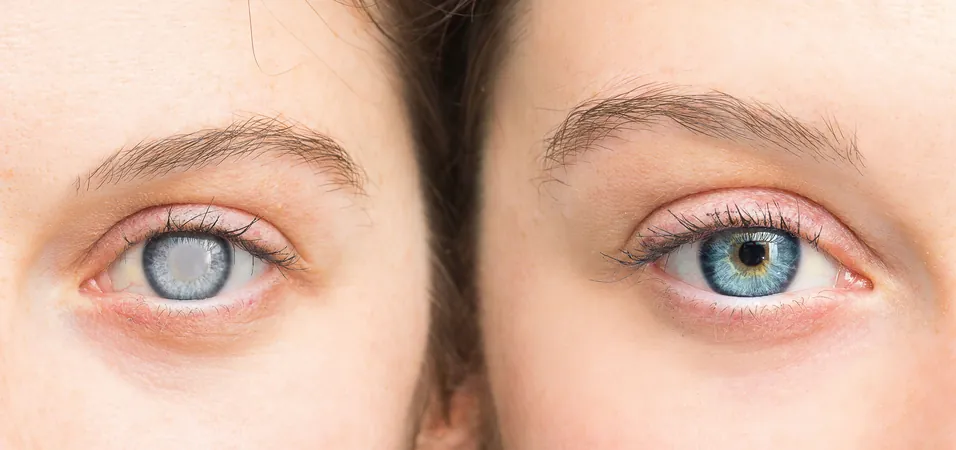
Unlocking the Future of Glaucoma Treatment: How Polygenic Risk Scores Could Revolutionize Care
2024-11-21
Author: Yu
Introduction
In an exciting development for glaucoma management, researchers have found that intraocular pressure (IOP) polygenic risk scores (PRS) are not only capable of identifying patients who will benefit most from intensive treatments to lower IOP but also serve as crucial indicators for determining glaucoma risk, even in those with normal IOP levels. This groundbreaking study, published in JAMA Ophthalmology, highlights the potential of genetic profiling in pinpointing individuals at higher risk for this vision-threatening condition.
The Significance of Glaucoma
Glaucoma, particularly primary open-angle glaucoma (POAG), represents a major global health concern, affecting around 2.4% of the population. Recognizing and addressing risk factors like IOP and the vertical cup-disc ratio (VCDR) is vital for early diagnosis and intervention, preserving sight for millions. Given the hereditary nature of these risk factors, the implementation of PRS could play a pivotal role in guiding treatment strategies.
Research Methodology
Researchers utilized data from multiple notable cohorts, including the Canadian Longitudinal Study on Aging (CLSA), the Busselton Healthy Aging Study (BHAS), and the UK Biobank, creating a robust, diverse study population. The CLSA included over 5,890 Canadian participants aged 45 to 85, while the BHAS comprised 1,588 individuals aged 46 to 64 from Western Australia. The research also incorporated a varied demographic from the UK Biobank, focusing on individuals aged 40 to 69, ensuring representation across ancestries.
Key Findings
Findings from the study revealed considerable improvements in the explanation of variance in both VCDR and IOP through the use of the new PRS. The CLSA results indicated that while traditional methods only accounted for a small fraction of the variance in VCDR, the new PRS explained up to 22% variance in phenotypes. In other datasets like BHAS and the UK Biobank, the PRS was shown to have similarly promising results, particularly in specific ancestral groups.
Limitations and Future Directions
However, the study is not without its limitations. The PRS is predominantly based on European ancestry samples, making it less predictive for individuals from other ethnic backgrounds. This disparity underscores the urgent need for future research to develop more inclusive genetic models, particularly for African populations, who exhibit different IOP characteristics.
Conclusion
Notably, while the study provides a promising foundation for how genetic insights can enhance glaucoma risk assessment and treatment planning, researchers caution that these findings have yet to translate into measurable clinical outcomes. The overarching goal remains: to refine glaucoma treatment pathways by integrating genetic risk scores into routine practice.
Looking Ahead
In summary, the emergence of polygenic risk scores in glaucoma management is poised to revolutionize the way healthcare providers identify at-risk patients and tailor treatment plans, potentially transforming the landscape of eye care as we know it. Stay tuned for developments as the research continues to unfold!
 Brasil (PT)
Brasil (PT)
 Canada (EN)
Canada (EN)
 Chile (ES)
Chile (ES)
 España (ES)
España (ES)
 France (FR)
France (FR)
 Hong Kong (EN)
Hong Kong (EN)
 Italia (IT)
Italia (IT)
 日本 (JA)
日本 (JA)
 Magyarország (HU)
Magyarország (HU)
 Norge (NO)
Norge (NO)
 Polska (PL)
Polska (PL)
 Schweiz (DE)
Schweiz (DE)
 Singapore (EN)
Singapore (EN)
 Sverige (SV)
Sverige (SV)
 Suomi (FI)
Suomi (FI)
 Türkiye (TR)
Türkiye (TR)